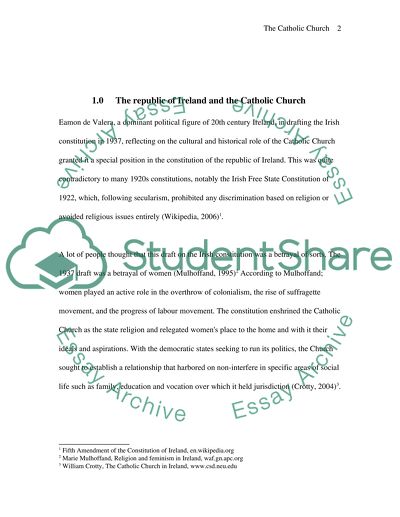Cite this document
(“The Catholic Church in Ireland Essay Example | Topics and Well Written Essays - 1500 words”, n.d.)
The Catholic Church in Ireland Essay Example | Topics and Well Written Essays - 1500 words. Retrieved from https://studentshare.org/religion-and-theology/1505243-the-catholic-church-in-ireland
The Catholic Church in Ireland Essay Example | Topics and Well Written Essays - 1500 words. Retrieved from https://studentshare.org/religion-and-theology/1505243-the-catholic-church-in-ireland
(The Catholic Church in Ireland Essay Example | Topics and Well Written Essays - 1500 Words)
The Catholic Church in Ireland Essay Example | Topics and Well Written Essays - 1500 Words. https://studentshare.org/religion-and-theology/1505243-the-catholic-church-in-ireland.
The Catholic Church in Ireland Essay Example | Topics and Well Written Essays - 1500 Words. https://studentshare.org/religion-and-theology/1505243-the-catholic-church-in-ireland.
“The Catholic Church in Ireland Essay Example | Topics and Well Written Essays - 1500 Words”, n.d. https://studentshare.org/religion-and-theology/1505243-the-catholic-church-in-ireland.


